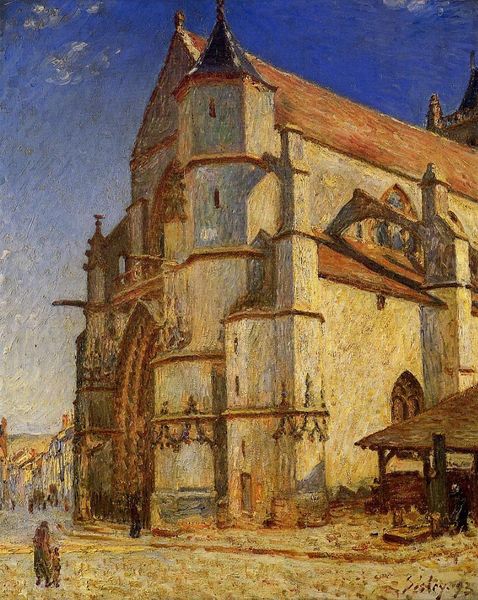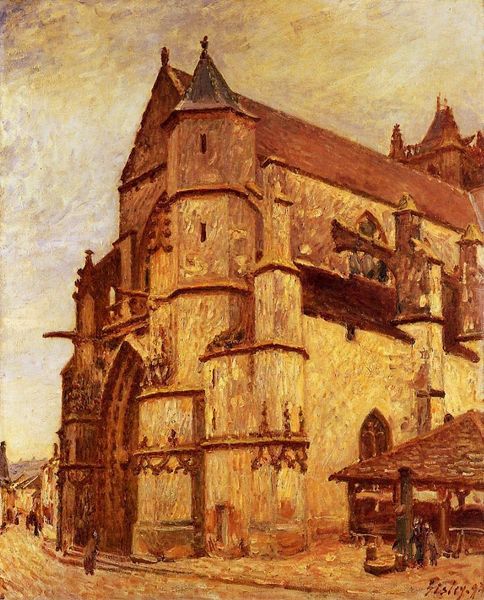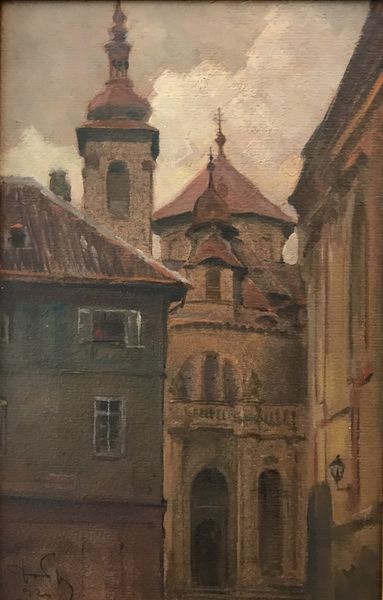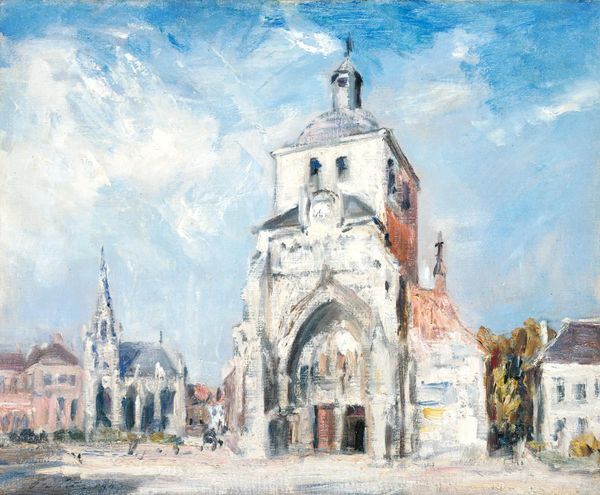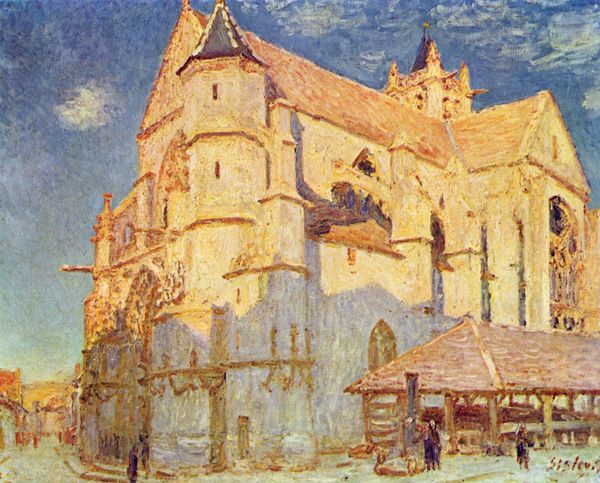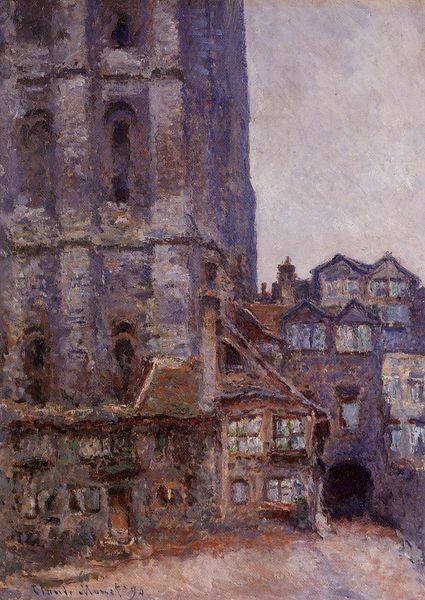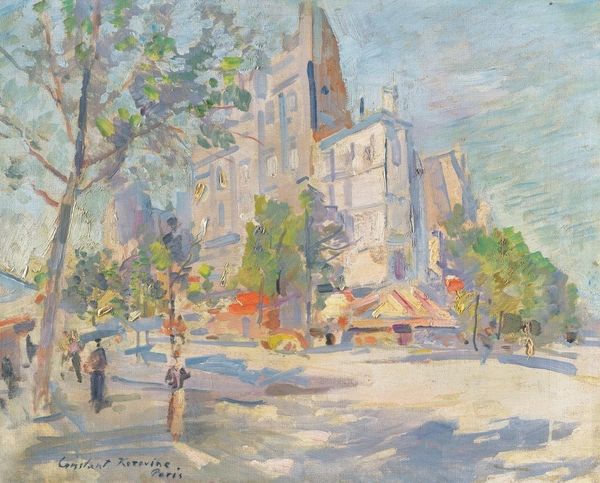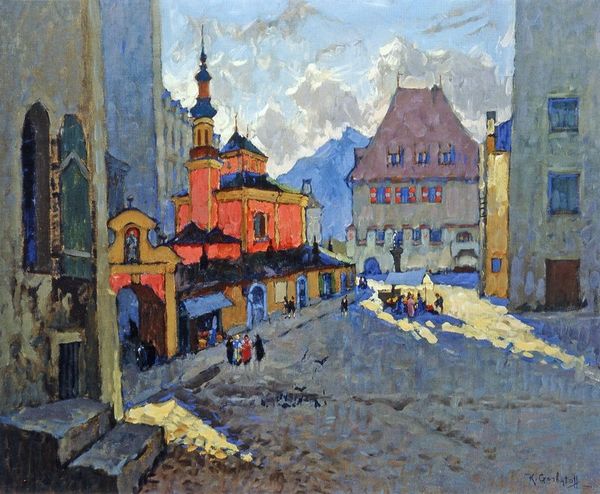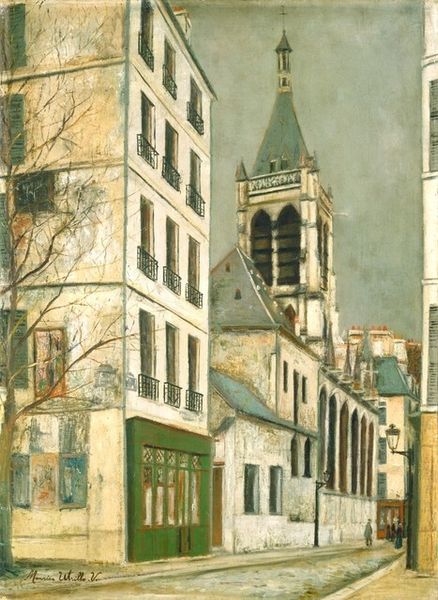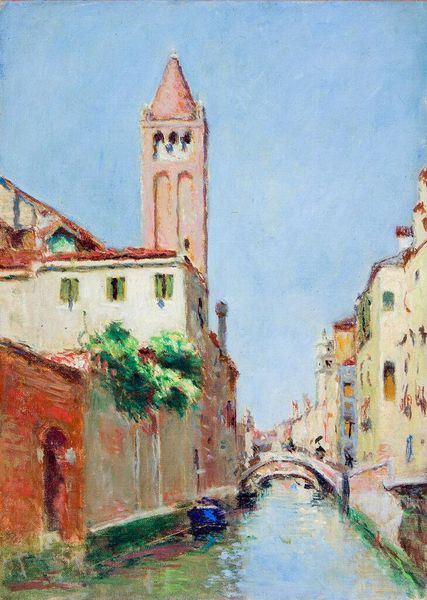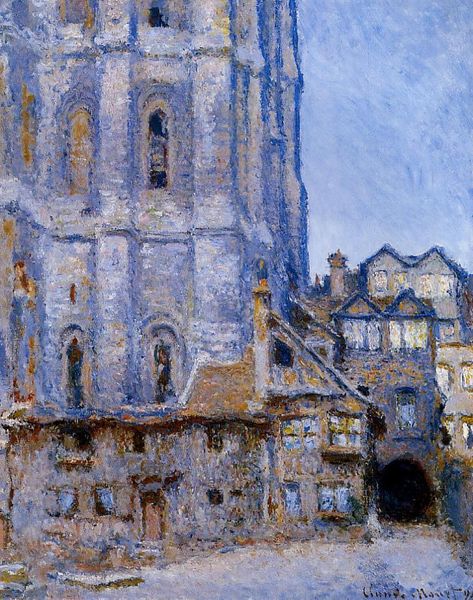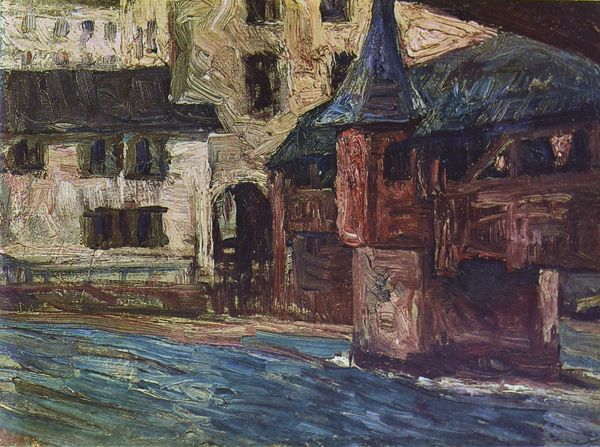
Copyright: Public Domain: Artvee
Alfred Sisley created ‘L’Eglise de Moret’ with oil paints on canvas, a standard practice for his time. However, it’s the materiality of paint itself that I find most compelling here. Sisley’s visible brushstrokes aren't just about capturing light; they reveal the labor involved in applying each layer. Look closely, and you’ll notice how the texture of the paint mimics the rough surfaces of the church’s stone façade. This isn’t just a depiction of a building, but a record of the physical act of painting itself. The thick impasto creates shadows and depth, emphasizing the three-dimensionality of the architecture. Sisley’s choice to embrace the tactile qualities of oil paint elevates the work beyond mere representation. He engages with the tradition of painting, not just as a means of illustrating, but as a craft rooted in the materiality of his chosen medium. This brings the painting closer to traditions usually relegated to the applied arts.
Comments
No comments
Be the first to comment and join the conversation on the ultimate creative platform.
